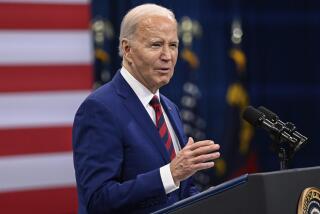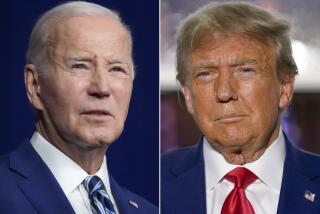Why did Trump win? Because Democrats stayed home

When all the ballots are counted — some 4.3 million remained in California as of Thursday night, according to the state’s secretary of state — Hillary Clinton will have won the popular vote by well over a million votes, en route to losing the electoral college and the White House.
The result put a spotlight on the country’s deep, almost 50/50 division. Democrats, many still in shock over a result that most people in either party did not expect, have been agonizing over how this happened.
They don’t need to look far from home for a big part of the answer.
In the immediate aftermath of Donald Trump’s victory Tuesday night, a lot of attention, justifiably, centered on his ability to boost turnout in conservative, rural counties, especially in the upper Midwest.
The Wall St. Journal presciently had focused on that region about a week before the election. Census data showed that during the past 15 years, counties in the region surrounding where Wisconsin, Minnesota, Iowa and Illinois meet had shown “among the fastest influxes of nonwhite residents of anywhere in the U.S.” — largely Latino immigrants starting to move into formerly all-white areas, they found.
Those same counties had shown great support for Trump in the GOP primaries. On election night, that area was where Trump made many of his biggest gains, accounting for his victories in Wisconsin and Iowa and the unexpectedly close result in Minnesota.
The data analysis that Trump’s campaign did, an effort that was more extensive and sophisticated than many Democrats believed, showed the same thing. In the closing days of the campaign, the Republicans targeted the areas they needed most.
But there was no Trump surge overall. While he made big gains in those Midwestern counties and in other heavily white areas such as eastern Ohio, northeastern Pennsylvania and parts of central Florida, he lost ground elsewhere.
Clinton actually succeeded in one of her campaign’s key goals — eating into traditional Republican territory in big suburban counties.
In Montgomery County, Pa., for example, the largest of the suburban counties that ring Philadelphia, Clinton ran about 30,000 votes ahead of the pace that President Obama set four years ago. Among other big suburban locales she won was Fort Bend County outside of Houston, a once-deeply Republican area that was represented in Congress by former Rep. Tom DeLay, the Republican majority leader of the House a decade ago.
Clinton also won Orange County, which since 1936 had never voted for a Democrat — the longest streak of one-party victories in California.
Those suburban losses largely offset Trump’s gains in more blue-collar white counties. As a result, once the final votes are in, he will end up with pretty much the same total that Mitt Romney received four years ago — likely slightly fewer.
Clinton lost not because of a Trump surge, but because she will end up with several million fewer votes than President Obama got in 2012.
Some of the Democratic drop-off came in those heavily white blue-collar counties that Trump carried. In Lackawanna County, Pa., for example, the county that includes Scranton, where Vice President Joe Biden grew up, Clinton fell some 23,000 votes short of Obama’s mark.
Because she lost Pennsylvania by just over 68,000 votes out of almost 5.8 million cast, that deficit mattered greatly.
But Clinton also got about 37,000 fewer votes in Philadelphia than Obama achieved. Similarly, Clinton lags more than 78,000 votes behind Obama’s 2012 pace in Michigan’s Wayne County, home to Detroit, with some ballots still to be counted. As of Friday morning, Michigan remained too close to call, with Trump narrowly in the lead.
Democratic strategists had always expected that turnout among African American voters would fall once Obama was no longer on the ballot. They hoped to make up the difference by attracting suburban voters turned off by Trump’s often bombastic style.
They almost made it — a switch of only 40,000 among Michigan, Pennsylvania and Wisconsin, out of more than 13 million cast in those three states, would have delivered the election to Clinton. But the combination of white, working-class defections in places like Scranton, lower African-American voting and an overall drop in turnout of several million people sank their plans.
In the aftermath, Clinton aides have blamed their loss on a highly negative campaign that turned off voters, on FBI Director James Comey, whose last-minute intervention in the race may have blunted their appeal to wavering voters, and on the apparent Russian-backed leaking campaign by WikiLeaks, which served as a constant distraction.
But campaigns always encounter turbulence. In the final accounting, Clinton simply failed to inspire enough of her supporters to turn out. Like John Kerry and Al Gore, she fell short.
More to Read
Start your day right
Sign up for Essential California for news, features and recommendations from the L.A. Times and beyond in your inbox six days a week.
You may occasionally receive promotional content from the Los Angeles Times.







